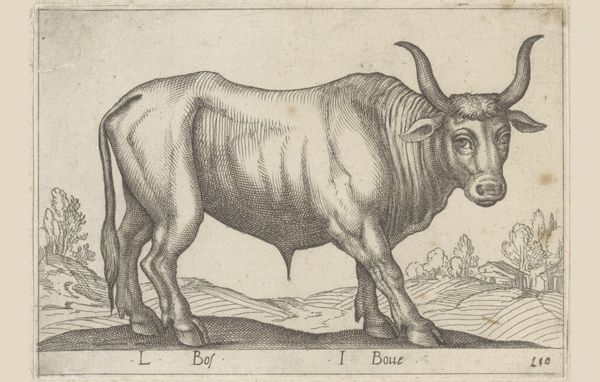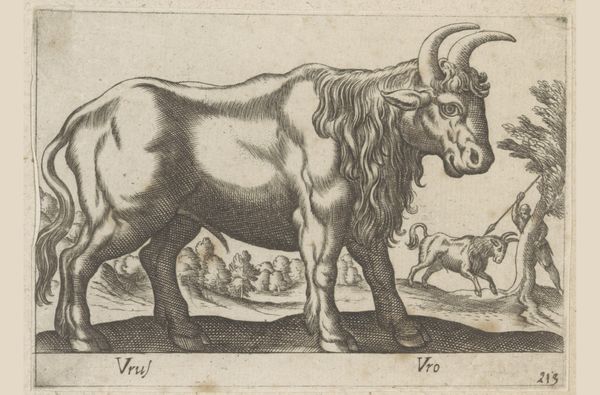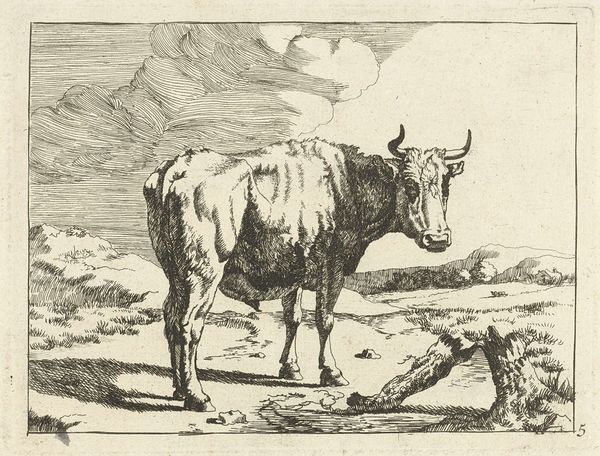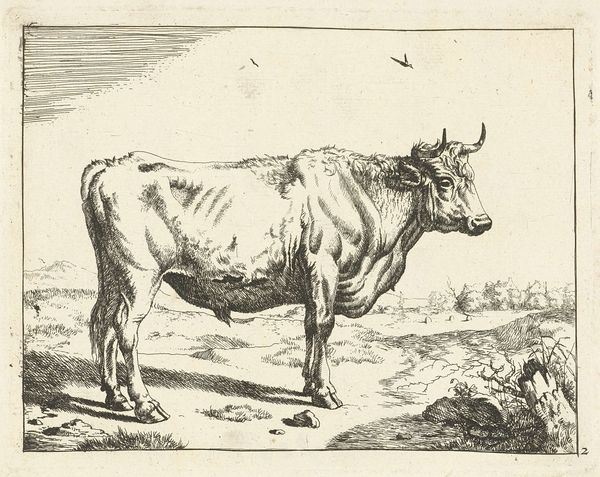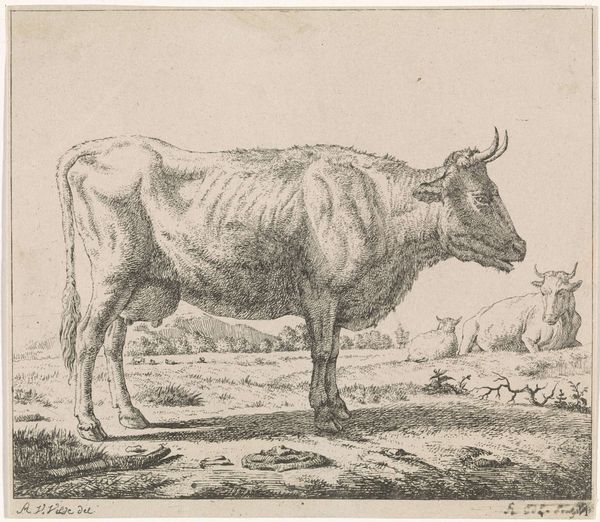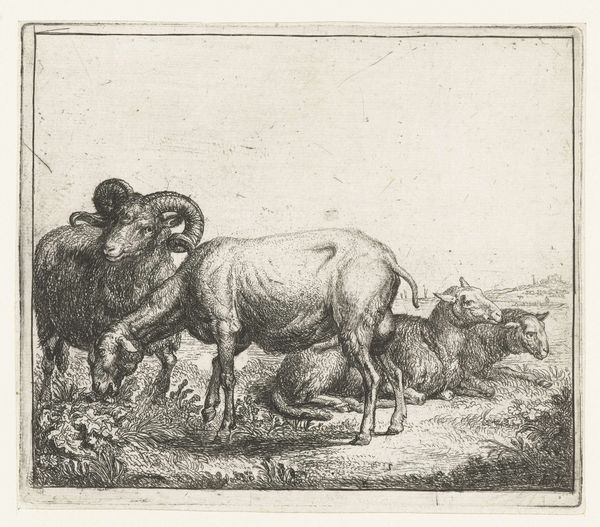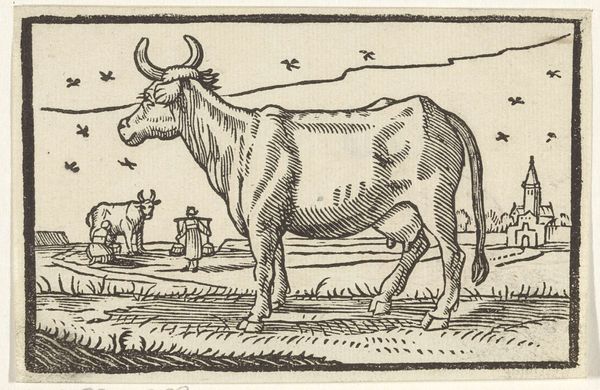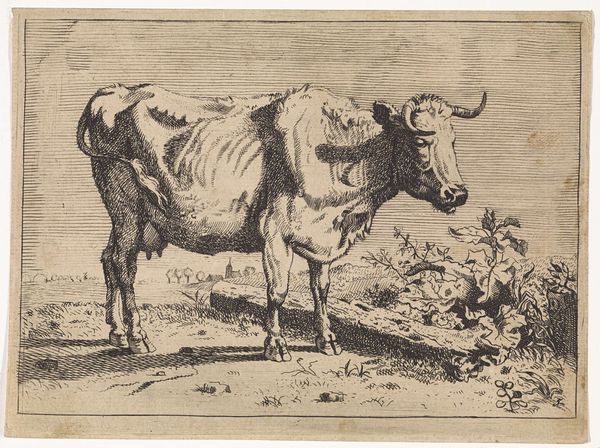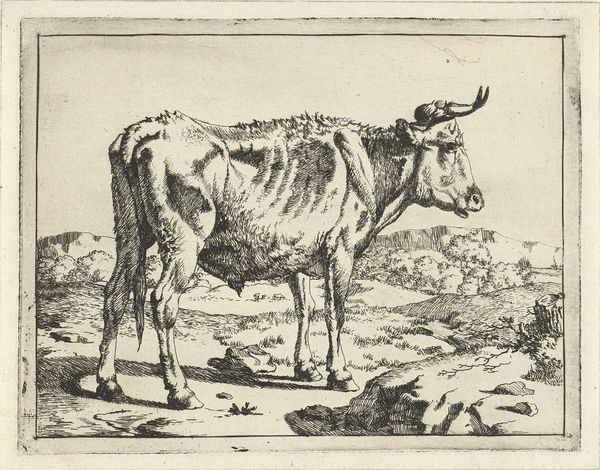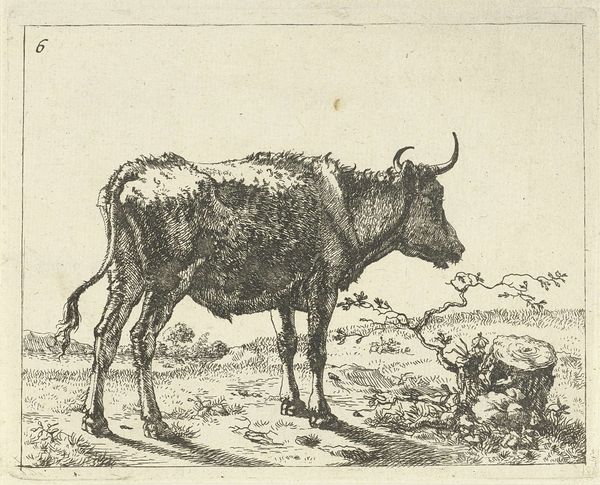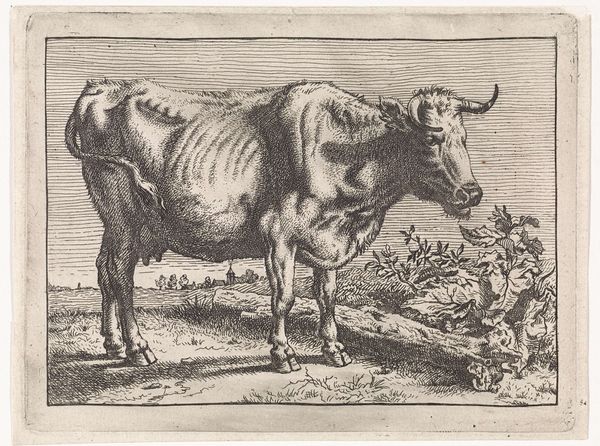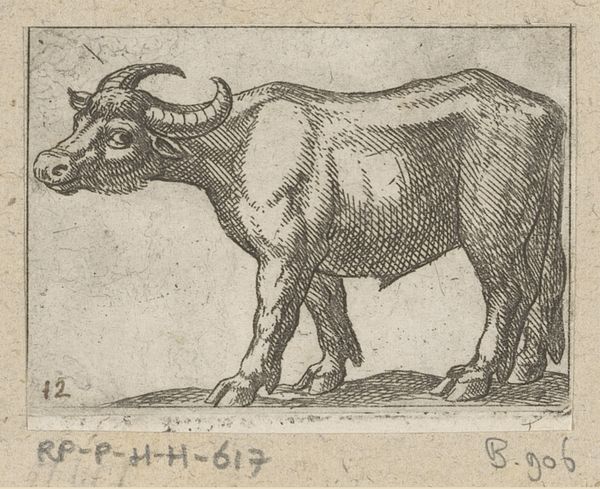
print, engraving
#
baroque
#
animal
# print
#
landscape
#
figuration
#
engraving
Dimensions: height 95 mm, width 137 mm
Copyright: Rijks Museum: Open Domain
Antonio Tempesta made this print of a bull, sometime between 1575 and 1630, using an engraving technique. Engraving is an intaglio printmaking process, meaning the image is incised into a plate, usually made of copper. The artist would have used a tool called a burin to carve lines into the metal, creating grooves that hold ink. The plate is then inked, and the surface wiped clean, leaving ink only in the engraved lines. Finally, the plate is pressed onto paper, transferring the image. The crisp, precise lines characteristic of engraving give Tempesta’s bull its clear form and texture. The process is labor-intensive and demands considerable skill, a testament to the value placed on craftsmanship during the Renaissance. Prints like this were more than just art objects; they were a means of disseminating knowledge, and of visualizing the natural world. Paying attention to materials and processes helps us understand the significance of this image, challenging our traditional views about art and craft.
Comments
No comments
Be the first to comment and join the conversation on the ultimate creative platform.
